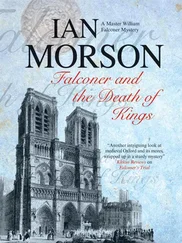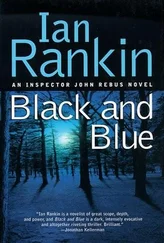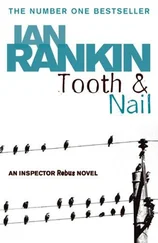Grass is a crop requiring the same care and attention as wheat, potatoes, or sugar beet. It needs cultivating, fertilising, and utilising to best advantage and when it receives this treatment the returns per acre can be as high as from any other crop. Moreover, it has a valuable function in restoring fertility to the soil. In two world wars, by ploughing up a large proportion of our grassland and cropping with cereals, good crops were produced with the minimum of fertiliser, valuable shipping space was saved and a decisive contribution to victory was made.
Mention has been made of the fertility-restoring power of grass and one may rightly ask how this is brought about. The very serious problems of erosion which concern authorities in various parts of the world serve to highlight this vital question of soil conservation. Soil fertility is dependent upon good tilth, maximal water and air, and maximal plant nutrients. Tilth represents the physical condition of the soil in relation to plant growth and each crop has its own requirements for a seed bed. Ploughing, rotovating, cultivating, disc harrowing, and the use of rollers and spiked harrows disturb the soil so that it becomes granular in structure and suitable for the reception of small seeds, yet capable of resisting the shattering and erosive effects of heavy rain until such time as the crop itself provides a close canopy which protects the soil and prevents the fine particles from being washed away by flood waters.
The soil needs to have what is termed “structure.” The extremes are sand, which is devoid of structure, on the one hand, and clay, in which the particles are so small that pore space for air and water is virtually non-existent, on the other. Between these extremes lies a “crumb structure” with aggregated particles usually greater than 0.5 mm. in diameter and preferably from 1 to 55 mm. in diameter. When this crumb structure is attained the soil has the capacity to hold enough moisture for the needs of the crop and can resist both “drying-out” during periods of drought and the mechanical stresses of farm equip ment. Flora and fauna play their part in achieving this ideal through the medium of microbiological activity in the decomposition of organic matter and in fixing atmospheric nitrogen through the medium of leguminous plants. Grassland swards have a vital role to play in the maintenance of fertility since they contain legumes in most cases and when ploughed provide necessary organic matter.
Sandy soils have the advantage of free drainage, good aeration and ease of cultivation, as any gardener on a sandy soil will admit. But these are often too loose and too open in texture and lack the capacity to absorb and hold water and plant nutrients. They are termed “hungry” soils and the limitations of such soils are best overcome by grasses, the fine roots of which physically bind together the mineral particles. Farmyard manure, and green crops which are ploughed in—“green manuring”—perform the same function but a good deal less effectively and at considerably higher cost to the farmer or gardener. Moreover, a long ley or permanent grass sward gives complete coverage from storm water and thus prevents erosion.
Clay soils are very finely-textured and retain moisture to such an extent that a field may be unworkable for several months in the year. Clay is a colloid and therefore very cohesive and highly plastic. Thus when clay soils are cultivated in too wet a condition they become even stickier and are said in farming terms to “poach.” Poached land dries out into hard, intractable clods which defy all the efforts of man and machine to break them down to produce a seed bed. In this case granulation of the clay particles to form aggregates—“flocculation” to the chemist—must be brought about, and here again grasses and deep-rooting clovers have a vital role to perform. Farmyard manure, though more effective with clay than with sandy soils, does not increase soil permeability to the same extent as do the fibrous roots of grasses.
I hope I have stressed adequately this unseen function of our grassland. Most people understand the milk or meat-producing relationship between our grassland and the needs of man. Very few appreciate how essential the grass plant is to the whole cropping system of the country.
Grass provides the cheapest way of feeding herbivorous animals during its growing season, while grass conserved as silage or hay, or dried by artificial means, can be used for feeding during the winter months. The following table compares the cost of each food unit (“starch equivalent”) from various forms of grass with other succulent foods and clearly underlines the vital necessity of having an adequate supply of fresh grass for feeding.
TABLE 2. COST OF STARCH EQUIVALENTS
| Crop |
Cost per ton of starch equivalent |
| Grazings |
£11.0 |
| Grass Silage |
17.2 |
| Hay |
19.7 |
| Kale |
16.9 |
| Barley |
21.3 |
| Oats |
30.2 |
| Arable Silage |
34.0 |
| Dairy Cake (at £35 per ton) |
53.8 |
Recent research work both in the United States and on farms in this country points to the fact that it may be cheaper and more efficient to mow the grass during the summer months and cart it to the cows, which remain in covered yards—a practice known as “zero grazing,” “green soiling” or “mechanical grazing”—rather than to allow the cattle to graze. We shall deal with this question later on.
What are the products of grass? It contributes some 67 per cent of the total feed requirements of all our livestock and since pigs only account for about 3 per cent and poultry 6 per cent, it means that grass provides on the average at least 70 per cent of the diet of cattle and sheep and the few goats. Home-produced veal, beef, mutton, and lamb, our leather and wool, our milk, butter, and cheese, are largely the final product of grass. Few realise the magnitude of these products and their importance to the economy of the country. The table below gives some idea:
TABLE 3. THE GROSS OUTPUT FROM ANIMALS MAINLY DEPENDENT UPON GRASS—UNITED KINGDOM 1961–2
|
Value |
Quantity |
|
£Million |
|
| Cattle: Beef |
227.1 |
870 thousand tons |
| Veal |
5.6 |
21 |
| Sheep: Mutton & Lamb |
88.7 |
264 |
| Wool |
17.1 |
39 |
| Milk and Milk Products |
364.8 |
2388 million gallons |
|
703.3 |
|
If grass contributes 70 per cent of the total feed requirements of the above stock groups, £492,300,000 of production can be attributed to grassland. This figure represents 31 per cent of the £1,592,000,000 output from national agriculture in 1961–2.
We are all eaters and users of grass. Numbered within the great grass family Gramineae are the cereals—wheat, barley, oats, rye, maize, rice, millet, and sorghum—which provide many of our staple foods. Most of the world’s really fertile grassland areas grow cereals so well when ploughed that they are known as “bread baskets.” In this category fall the wide prairies of the United States and Canada, the vast grain belts of the Ukraine and Australia, and the pampas of Argentina. Cane sugar is derived from a grass ( Saccharum officinale ). Those giants amongst the grasses, the bamboos, include majestic trees towering to a height of a hundred and twenty feet and some three feet in circumference, forming impenetrable forests as well as providing a variety of useful articles from musical pipes to furniture and domestic utensils. Some grasses are necessary to bind sand and combat the encroaching sea which at certain points along our coastline is ever striving to engulf more and more land. Other grasses provide fragrant oils and perfumes. Lemon grass or Indian grass ( Cymbopogon citratus ), which grows wild in India, is also cultivated both there and in Ceylon and is used for infusing a tea which is reputed to have medicinal properties. Andropogon nardus is cultivated in Ceylon and Singapore for the production of citronella oil which is used extensively in the manufacture of soaps and perfumes as well as for the treatment of rheumatism in India. Finally, still other grasses provide the turf we use for sport and recreation.
Читать дальше












